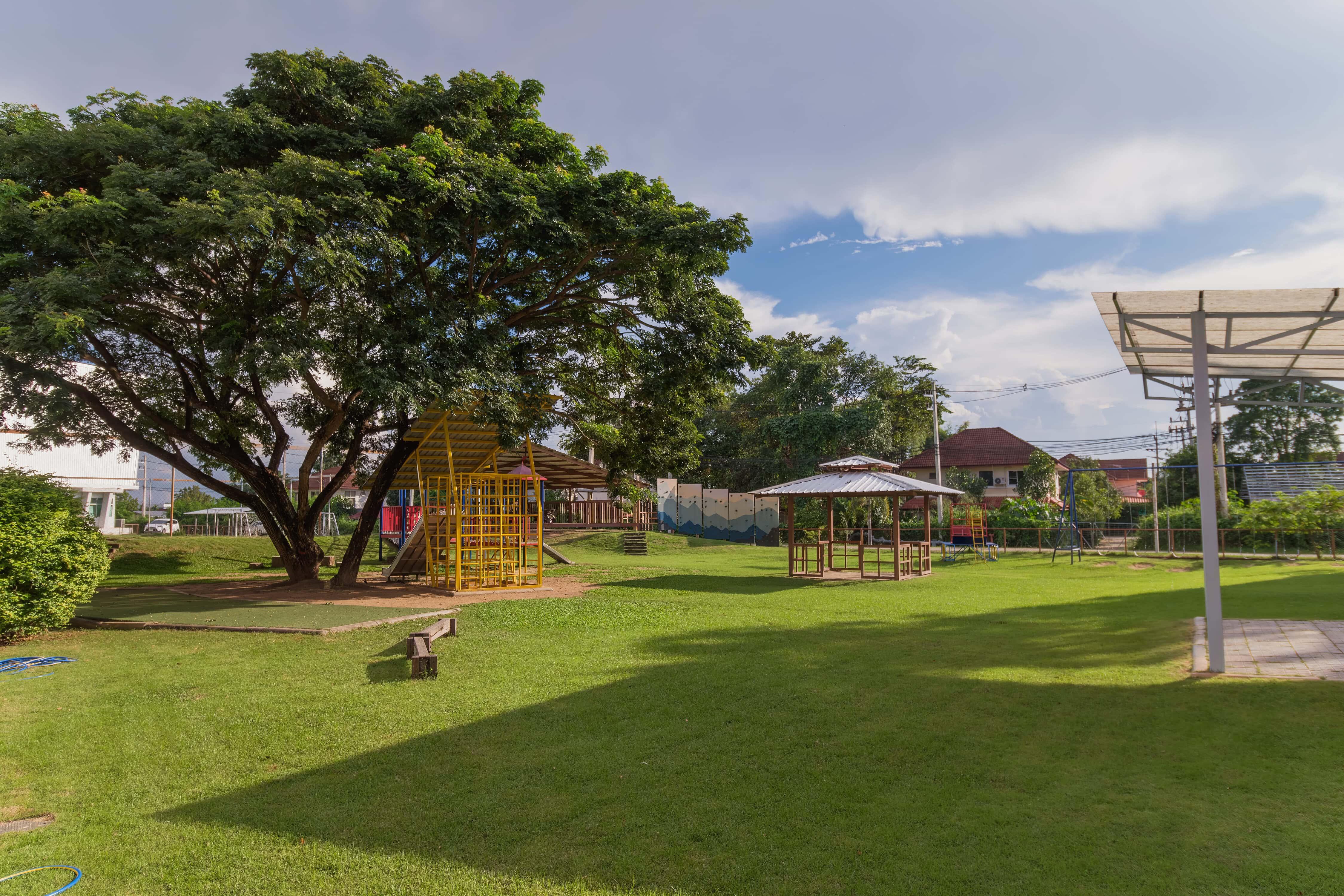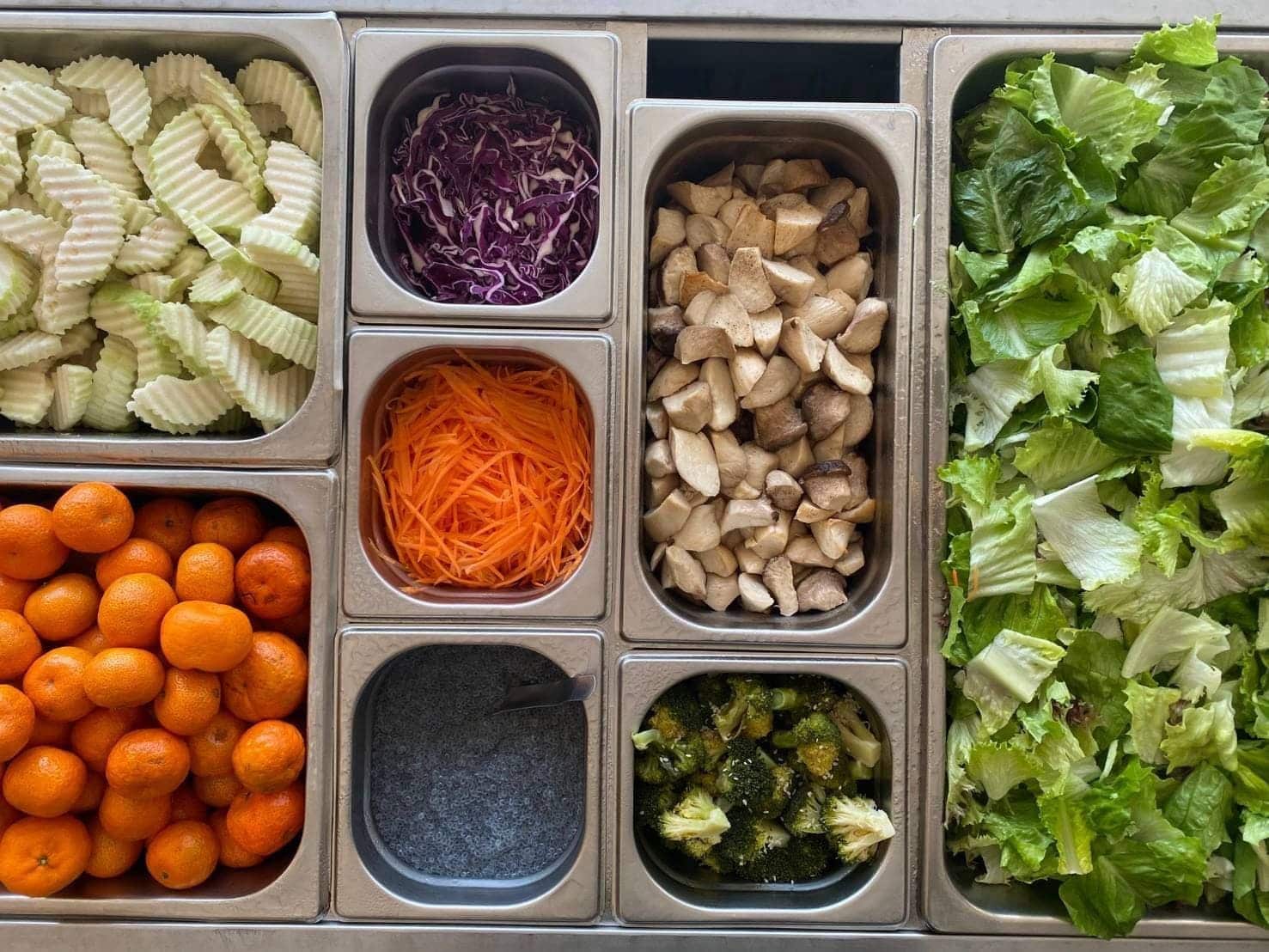Clean Air Measures
At SBS International School Chiangmai, students’ health and safety is our top priority. Recognising that outdoor air quality can sometimes be challenging in Chiang Mai, all Kindergarten and Primary classrooms are equipped with individual air purifiers. We have also installed PM 2.5 air purification filters in all of our classrooms and learning spaces to improve the air quality to a safe level so that students are alert and able to fully focus on their learning.
AQI Policy and Practice Our Early Years and Primary School response to the AQI is more restrictive than that for Secondary School because medical evidence indicates that very young children are more vulnerable to the effects of particulate pollution than older children and adults. When the AQI is over 200, all Early Years and Primary students will be kept indoors. Where the AQI is between 150 and 199, consideration will be given to allowing the children a shortened period of outdoor play. The threshold for Secondary School students is 225. Where the AQI is between 200 and 224, consideration will be given to allowing students a shortened period of outdoor activity. Thresholds for students with respiratory problems are 150 for all students. It is absolutely crucial that parents inform the classroom teacher if their children have respiratory problems, and that parents reiterate these thresholds with their children. Readings are taken at least 3 times every day around our campus and the information supplied to the leadership teams in each school, in order that decisions can be made informed by current circumstances.
Monitoring and Responding to Air Pollution Levels SBS International School Chiangmai administration monitors daily air pollution levels as measured using the on-campus Air Pollution Monitor.
When there is elevated air pollution as evidenced by outdoor PM2.5 and PM10 particulate count, the administration informs the teachers and students in a timely manner. Decisions determining which activities are limited or cancelled are made in accordance with the activity restrictions aligned with the Air Quality Index (AQI) of the Thai Air Quality Index for Particulate Matter.
Teachers and staff are notified in a timely manner if pollution levels require a change in the daily student schedule or to after-school activities. Parents will be notified if the AQI requires a change in school operations.
Air Quality Index (AQI)

Reducing Student Exposure
In response to AQI readings, SBS takes the following measures to limit student exposure to harmful air pollution:
- Classrooms doors and windows are closed and air conditioners are turned on.
- Air condition unit air purification filters are regularly cleaned and serviced.
- Outdoor recess is cancelled and moved indoors.
- PE is moved indoors.
- Outdoor ECA’s are cancelled or moved indoors.
- Lunch is served in the classrooms.
It is recommended that children come to school wearing a face mask (N95 standard, if possible). Face masks are also available for sale at the school shop. Some parents may wish to keep their children at home on high poor AQI days. If you choose to do so, please inform the school as soon as possible so that plans can be made to provide missed work and attendance can be adjusted accordingly without being marked as absent.
Possible Symptoms of Exposure to Harmful Air Pollution:
- Coughing / sore throat
- Burning / painful or red eyes
- Headache
- Vomiting or nausea
Healthy Lunch
At SBS we strive to guarantee that your child receives a nutritionally sound lunch. We ensure to offer fruits and vegetables, whole-grain foods, low-fat dairy products and limit calories, saturated fat and sodium. A healthy school lunch provides sound nutrition to establish a lifetime of healthy habits and the energy your child needs for the rest of their busy day.
PROVIDES KEY NUTRIENTS
It’s vital your child eats a healthy lunch, because lunch provides one-third of their daily calories. You want to make those calories count by offering nutrient-dense foods. Children who eat a healthy lunch have a higher nutrient intake not only for lunch but also for the entire day. lunch provides one-third of daily needs for protein, vitamins A and C, iron and calcium, which are critical nutrients often lacking from a child’s diet.
PREVENTS OBESITY
Providing children with healthy foods at school is a key step in decreasing childhood obesity rates. School menus that are high in saturated fat can lead to obesity and associated health conditions, which include diabetes and high blood pressure. Healthy options, such as high-fiber foods, whole-grains, fruits, vegetables, legumes and low-fat dairy products, will fill up your child and keep him full longer. This can prevent unwanted weight gain and chronic health conditions.
LIMITED FAT INTAKE
The American Heart Association recommends children get no more than 25 to 35 percent of their calories from fat, with most fat coming from polyunsaturated and monounsaturated fats. Think nuts, fish and vegetable oils as opposed to pizza, cake and cookies. This is enough to support normal growth and development, and to meet your child’s energy needs while supporting sound heart health for now and the future. A healthy school lunch limits fat to less than 30 percent and saturated fat to less than 10 percent of overall calories over the course of a week.
BOOSTS ENERGY
When children don’t eat a healthy lunch, it’s harder for them to concentrate at school and to muster the energy for after school activities. They’re also more likely to reach for unhealthy snacks later in the afternoon. By offering a healthy school lunch, your child will get the energy he needs to power through the afternoon. A study published in 2008 in the “Journal of School Health” examined the eating habits of nearly 5,000 school children. Children who ate more fruits, vegetables and protein and fewer calories from fat, performed better on literacy tests compared to children with a high-fat, high-salt diet.


